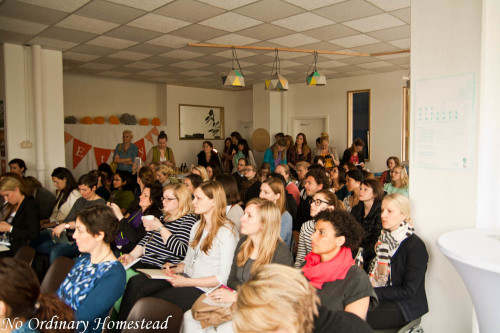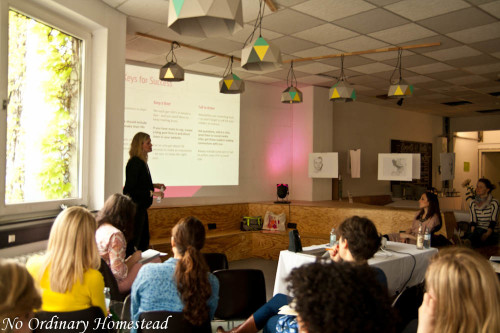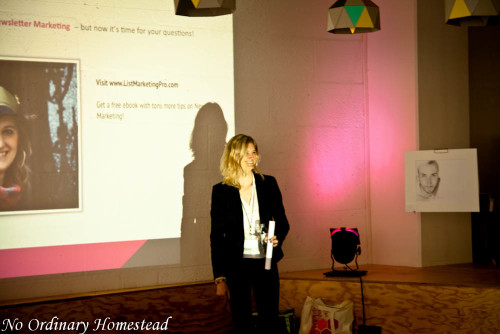Bright and early on Saturday morning, as one of two presentations kicking off The Hive European blogging conference, I was standing front and center, talking to a room full of women (and a couple men) about something that I’m actually quite passionate about: newsletters and email marketing.
Just about everyone I know who has some sort of business and has asked me for advice (and many who never asked for advice but got it anyway) know that I firmly believe that email newsletters are one of the best marketing tools available today. Even though most of us end up with an overflowing Inbox on a regular basis (despite trying to achieve Inbox Zero), using emails to build your brand and for marketing is still wildly successful. In fact, it’s way more efficient and effective when it comes to not only building relationships with your readers and customers, but also at getting reactions from people.
Email marketing has been around for quite a long time, and I actually first learned the importance and power of using email lists for marketing several years ago when I took the online course Product Launch Formula 2.0 by Jeff Walker. It’s the type of course that can change your life — and will if you implement the materials into your business. One of these days I will write a full and proper review of the course and how it affected me and my businesses. But one of the big things that Jeff teaches there is using newsletters and mailing lists to create a bond with your potential customers, and then using the list as a tool to really draw your customers in when you introduce new products, start a sale or just want to ask them some questions or get visitors to your blog.
In my own presentation, I wanted these bloggers to take note of the fact that newsletters are not spam — and they are no just having your blog posts sent automatically to a list of subscribers as soon as they are published. What I’m talking about is something that may or may not have pretty graphics in it. But is indeed a personal note from you which includes some meaty tips and tricks on whatever subject you write or sell products about. It’s a tool to help establish that you are an expert in your field (or at least really know what you’re talking about) and that you want to help others learn as well. Sure, newsletters should be interesting and entertaining as well, because no one wants to read something that is going to put them to sleep every week. There has to be something in the mails which readers can use and take action on so that they keep opening up those emails from you week after week.
5 Essential Components of Email Marketing
There are so many powerful ways to use newsletters that I could probably go on talking for them for weeks and weeks — but what is really important to keep in mind is when you create your newsletter is the following:
- Make it useful — Just like with writing a blog, you need to give people something they can “take home” with them. Include not only your personal story, but give them some meat to sink their teeth into and take action on.
- Keep it short — We’ve all got a lot going on. So make sure you keep your emails are to the point and not 5 pages long.
- Don’t forget the a call to action — Whether you are asking people to respond to a survey, visit your website, follow you on Twitter or whatever it is, you absolutely should ask people to take some sort of action. This way, every time you ask for their help or even want them to come check out your new awesome product, they will be expecting it already and be more likely to click.
- Create a freebie — The best way to boost signups and encourage people to trust you with their email address is to offer them something for free. It can be an ebook, a video of you, a report or anything else of value — but if people don’t start signing up more the minute you add it to the page, you probably want to rethink your freebie.
- Use a email service for mailings — I personally use AWeber and love them, but there are many other services out there you can use. Whichever service you choose, just make sure you are not sending emails from your own private inbox and that there is a double opt-in. Not only is it legally necessary to have this sort of opt-in, but it also prevents your email address and ultimate your web domain from becoming blacklisted as a spammer!
To learn more about email marketing and newsletters, you can download a copy of my presentation, Using Newsletters to Strengthen Your Brand, on Slideshare. Or if you’d like to dig even deeper, pop over to my new website, List Marketing Pro, and sign up for a free copy of my Email Marketing Guidebook, chock full of tips to start building your own mailing list.
Do you have a mailing list for your blog or business? How often do you send emails? And what kind of things do you mail your readers about?








Trackbacks/Pingbacks